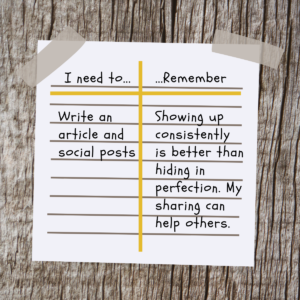3 Simple Ways to Get Out Your Head and into Action
Are you stressed with the amount of responsibilities you have and never able to adequately address them because other things keep coming up as well?
Does your growing to-do list heavily weigh on you emotionally and keep you from actually getting into a motivated, productive flow of focus?
1) When you’re in a flustered state with a million things racing through your mind, ask yourself, “Do I need to address this right now?”
Before dwelling further or scanning for solutions, stop and consider the cost of beginning to tackle such a concern in the moment. Are you able to take actions that’ll actually mitigate the problem?
If you don’t have the availability or resources to appropriately address the issue, identify a time when you can more thoroughly resolve it and put it on your calendar!
I like to ask myself this urgency question on weekends, because that’s when I’m supposed to be taking a break. Rather than dwelling on what should be done, I catch myself, write a note, then let it go so I can actually be present and enjoy the down time I’ve put aside for myself.
2) It’s also important to combat the underlying anxieties and doubts that are triggering negative emotions with your to-do list.
Often, when we’re putting off certain responsibilities or initiatives, it’s at least in part because we’re reluctant about screwing up in some way or dealing with an unpleasant obstacle that we’re anticipating.
An activity I find helpful is to make a T-Chart where I list all my to-dos on one side then list a positive affirmation I need to remember about each task on the other side so I can ground in assurance to be able to move forward with focus rather than fear.
Here’s an example to give you some context…

3) After you’ve reinforced your motivation for tackling your to-dos, acknowledge what’s not in your control and consider what you can afford to let go of.
This, my friend, is no small feat. And it requires ongoing practice. We often try to take control of matters that are beyond our reach, particularly when it comes to how others behave and react – so start by recognizing the distinction between your contributions and reactions and others’ ways of being. They have their own narratives, fears, and beliefs that they’re ultimately responsible for, not you.
When it comes to letting go of things on your plate that shouldn’t be burdening you, ask yourself the following question for every item of concern,
“What’s the worst that would happen if I didn’t do this?”
From such a scenario, identify the minimal viable effort required to do a satisfactory job.
You may scoff at this as a slacker attitude, but my guess is that your identity that’s seeped in hard-work and success won’t let this perspective get out of line. It’s just a framing to reel you in now and then so you don’t get caught up in unnecessary efforts and details.
Remember all of the tips addressed in this article are recommended practices that will work best when practiced over time. In order to move forward with more clarity, calmness, and confidence, I hope you’ll continue to refer back to these suggestions:
- Recognize when you’re overwhelmed and thinking about multiple to-dos/concerns at once then set a specific time on your calendar to more thoroughly address your worries
- Combat underlying anxieties and doubts that are triggering negative emotions with your to-dos
- Acknowledge what’s not in your control then let go of any non-essentials adding stress and taking up your time



